The stronger the AI is at writing code, the more dangerous the programmer is?
The sound of the keyboard in the office building at three in the morning suddenly stopped. Li Gong stared at the code snippet in the screen that GitHub Copilot was auto-completing, and the red wavy line kept flashing like an alarm. This was the seventh time this week that an AI-generated function had triggered a memory overflow at runtime. He rubbed his swollen temples and drifted back to his mentor’s advice: "The true value of a programmer is never in the speed at which he knocks out code. "
I. When AI becomes a "god teammate": the technological carnival behind the efficiency revolution
Microsoft Azure OpenAI service handles over 5 billion API calls per month, and GitHub Copilot users generate over 10 million lines of code per week. Behind these numbers is a quiet productivity revolution: auto-completion speeds up basic code writing by 55%, intelligent debugging reduces fault localization time by 40%, and natural language generation APIs allow even novices to build chatbots.
But under the surface of the technological carnival, the real case of a multinational bank is a wake-up call: the database connection code generated in bulk by the AI assistant did not take into account the distributed locking mechanism, which led to continuous crashes of the core trading system during traffic peaks. When the technical director reviewed the situation, he found that the team had overly relied on the AI-generated "standardized" code, and instead ignored the specificity of the business scenario.
Two, cognitive traps in the code fog: what are we losing?

In the code repository of a unicorn company in Silicon Valley, the "AI generation" label in the comments spreads like a weed. Older employees leaving the company not only take away experience, but also take away the logic of those architectural decisions that have not been written into the document. When new teams are faced with AI-generated libraries, no one can explain the history of a particular parameter adjustment.
This phenomenon confirms software engineering’s "Law of Decay of Knowledge": with each iteration of personnel, the understanding of the system decreases by 30%. the more beautifully standardized AI-generated code is, the more likely it is to hide the complexity of the underlying logic. Just like archaeologists facing a perfect replica of the bronze, can never know the real casting process of the ancients.

New research from Google Brain team reveals that only 15% of the programmer population using AI assistants consistently output high-quality code. The common characteristic of these people is to tune the AI tools like training interns – they will explain the business scenarios in detail in natural language, repeatedly fix the prompt words (Prompt), and insert validation breakpoints at key nodes.
The CTO of an e-commerce platform shared his "Sandwich Rule": AI is used to generate framework prototypes during the demand analysis phase, the core algorithm layer is used manually to build a protective shell, and then AI is allowed to perform boundary condition scanning in the final test. This layered collaboration model, so that the system iteration cycle is shortened by 60%, while the major failure rate is instead reduced by 23%.
IV. The ultimate software engineering proposition: who is defining the order of the digital world

When Microsoft Azure AI can automatically generate UML design diagrams, and when GitHub Copilot X begins to understand the architectural design intent, the anxiety of the programmer community reaches its peak. But a deeper look at the operation logs of the AutoML platform reveals that the cue words that produce great models often come from senior engineers who understand the business pain points.
This confirms a brutal truth: AI is reconfiguring, not replacing, the programmer’s ecological niche. Just like when cars replace horse-drawn carriages, top riders transform into race car drivers; when AI takes over basic coding, the real value creators are morphing into "digital architects". They are in control of demand deconstruction, logic validation, system tuning, and these cognitive highlands that AI has yet to break through.
When the light of dawn shone into the office at 5:00 a.m., Mr. Li finally found the root of the problem — the AI-generated thread pool configuration ignored the network jitter characteristic of China. He solemnly wrote in the commit note: "Manual verification link cannot be omitted". The most bizarre fable of this era is: when the machine is more and more like a person, people must live more and more like a machine like rigor. In the code generation accuracy breaks through 90% of today, the real decision software quality, precisely the remaining 10% of manual intervention space. Perhaps the future programming paradigm, is to teach AI to understand those who can not be structured expression of " industry code words ", like the old craftsman hand in hand to teach apprentices to identify the secret of the fire. The end game of this man-machine game is not to replace and be replaced, but to evolve a new form of digital civilization together.


